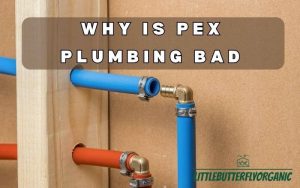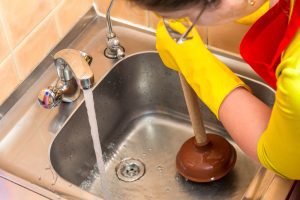The terms “hose bib” and “spigot” are frequently used interchangeably in plumbing contexts, which can make it challenging to understand their actual differences. This article aims to help you understand these terms and provide a detailed comparison of hose bibs and spigots.
Are the Spigot and Hose Bib the Same Thing?
A spigot and a hose bib do the same job – they let you control the water flow outside your house. However, sometimes people use these words a bit differently depending on their location or the specific situation.
Sometimes, when people say “spigot”, they’re talking about an outdoor water faucet that’s directly attached to the water pipes in your house. This faucet is fixed in place and you can’t move it around. You can use a spigot for many different jobs like filling up a bucket or attaching a hose.
But when people say “hose bib”, they’re usually talking about a special kind of outdoor faucet that’s made just for connecting a garden hose. This gives you a water source that’s easy to move around wherever you need it. This is useful for tasks such as watering plants and washing your car.

Key Differences Between Hose Bib and Spigot
In some situations, they may be different, so we give you some key features to help you understand clearly:
Design and usage
Hose bibs, which are devices that you can attach a hose to. They’re designed angled downwards, this angle helps make sure any leftover water drains out after you’ve turned off the water. This is important because if water is left inside and it freezes, it can cause the hose bib to crack or even break apart.
Additionally, most hose bibs have a round wheel handle, which brings them a distinct look. The wheel handle design makes it easier to regulate water flow, even when your hands are wet or when it’s cold outside.
Spigots, on the other hand, have various designs and may differ significantly based on their application. For example, a spigot attached to a large water cooler might be small and simple. Besides, a spigot meant for an outdoor rain barrel might be more durable, to withstand weather conditions, and might include a connection point for a hose. Another spigot variety includes those used indoors, such as beer spigots on kegs, which often come with a lever handle for easy pouring.

What are they used for
Let’s get into what hose bibs are used for. Thanks to their strong design and ability to withstand cold temperatures, these are an ideal option for providing water access outdoors. They can be installed in convenient locations such as your garden for easy watering, near your driveway for car washing, or next to your swimming pool for quick fill-ups. Their freeze-resistant design ensures they remain functional even in cold weather, making them a reliable choice no matter the season.
Besides, spigots have a more general application. You’ll find them on water heaters, rain barrels, large water jugs, and even beer kegs. The spigot’s design depends largely on what kind of container it is used for. For instance, a spigot for a rain barrel would likely have a hose connection, while others for a water cooler might be designed for filling cups or bottles.
Material and durability
Normally, both types can be made from a variety of materials, including brass, bronze, and plastic. However, hose bibs are generally designed to be more durable for their use in outdoor conditions.
Besides, Spigots can also be located outside, and are often sheltered within or attached to containers. This helps them reduce some of the exposure to harsh conditions.
Standard size
Hose bibs are usually created to fit standard garden hose fittings perfectly. Therefore, you won’t have to worry about compatibility issues when it comes to attaching your garden hose. Specifically, they typically fit with 1/2-inch and 3/4-inch hose fittings. This is one of the reasons why they’re so commonly used for outdoor water supply.
Besides, spigots provide more variety in size. Their size often depends on what they’re meant to be used for and the type of container they’re to be attached to. So, you can see they are versatile and able to meet a wider range of needs.

Do they freeze
As we describe above, hose bibs are generally used outdoors. Because of this, they often have features that prevent them from freezing during the colder months. So, you don’t need to worry when using it in the cold winter.
However, Spigots don’t usually come with these anti-freeze features. This is because they’re used in a wide variety of settings, not just outdoors, and therefore don’t typically face the same risk of freezing as hose bibs do.
Remember, if you live in a colder climate, it’s always a good idea to choose a hose bib or spigot that is suitable for that environment.
Code requirement
In many regions, plumbing codes require hose bibs to have backflow preventers. These devices prevent water from flowing back into the clean water supply and protect it from potential contamination. This requirement is especially crucial for hose bibs, as they are often connected to hoses used for various purposes, including gardening and car washing, where the hose end might be contaminated with dirt.
On the other hand, spigots do not typically have a backflow preventer requirement. Their use often does not pose the same risk of backflow that hose bibs do.
Read more: Schluter vs Bullnose: 6 Key Features You Should Know
Choosing Between Hose Bib and Spigot
As a homeowner, choosing between these types involves considering the overall aesthetics of your home, and the cost of installation and maintenance. Additionally, you can consider the durability and longevity of the chosen outdoor faucet. You may also want to think of if the hose bib or spigot complements other outdoor fixtures and fittings in your home.
For gardeners, it’s crucial to consider the ease of use and accessibility of them. It would be best to consider the distance from your plants and how easily you can connect your garden hose to it. Moreover, you might also want to think about how well the faucet handles exposure to the elements since it will be used frequently.
Plumbers need to consider the ease of installation, maintenance requirements, and quality of the hose bib or spigot. They might also consider the compatibility with existing plumbing systems and the availability of replacement parts.
Read more: What Does UE Mean on LG Washer: 8 Simple Steps to Fix
Conclusion
In conclusion, while hose bibs and spigots can often serve similar purposes, understanding their differences is key to making the right choice for your specific needs. Whether you are watering the garden or seeking an outlet for your rain barrel, the right outdoor water outlet can make a big difference.
FAQs
Outdoor faucets that fall into the standard category usually have a lifespan of 10 to 20 years. If you opt for more premium models, they can even extend this range. However, if your faucet begins to drip, it’s crucial to replace it swiftly to prevent any possible damage to your interior walls.
In order to find out the size of your hose bib, you should measure its circumference. You can do this by wrapping a tape measure around the bib, ensuring it stays in place while you’re measuring. After you’ve taken the circumference, you’ll need to double that number to get the correct size.
Typically, the majority of residences come with one or two hose bibs, often referred to as spigots, house faucets, or outdoor taps, which provide easy access to outdoor water. If your hose bib isn’t frost-proof, you probably shut off its water supply before winter and now it’s time to switch it back on.




